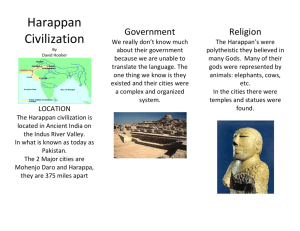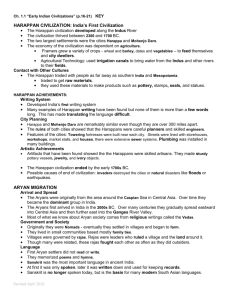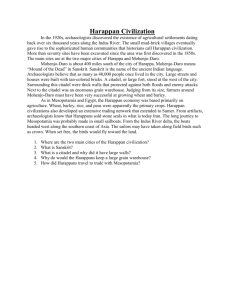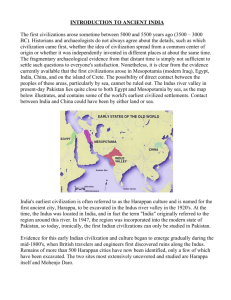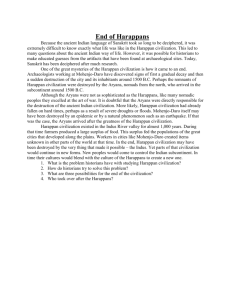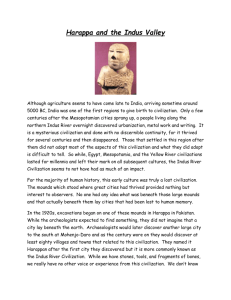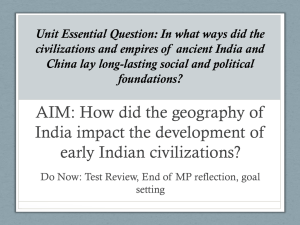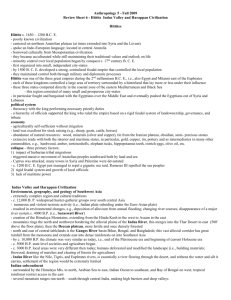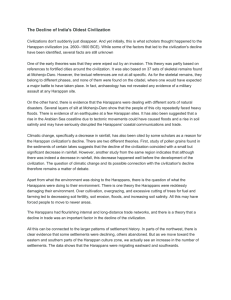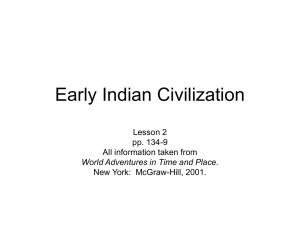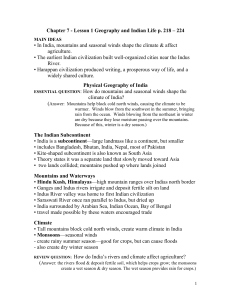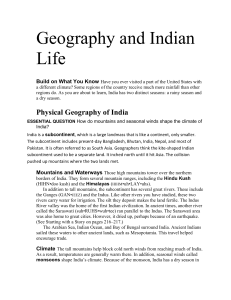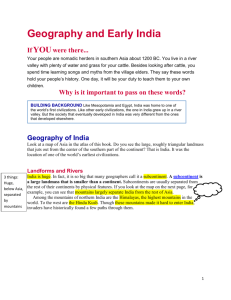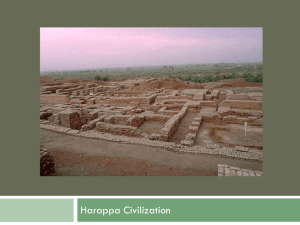Harappans
advertisement
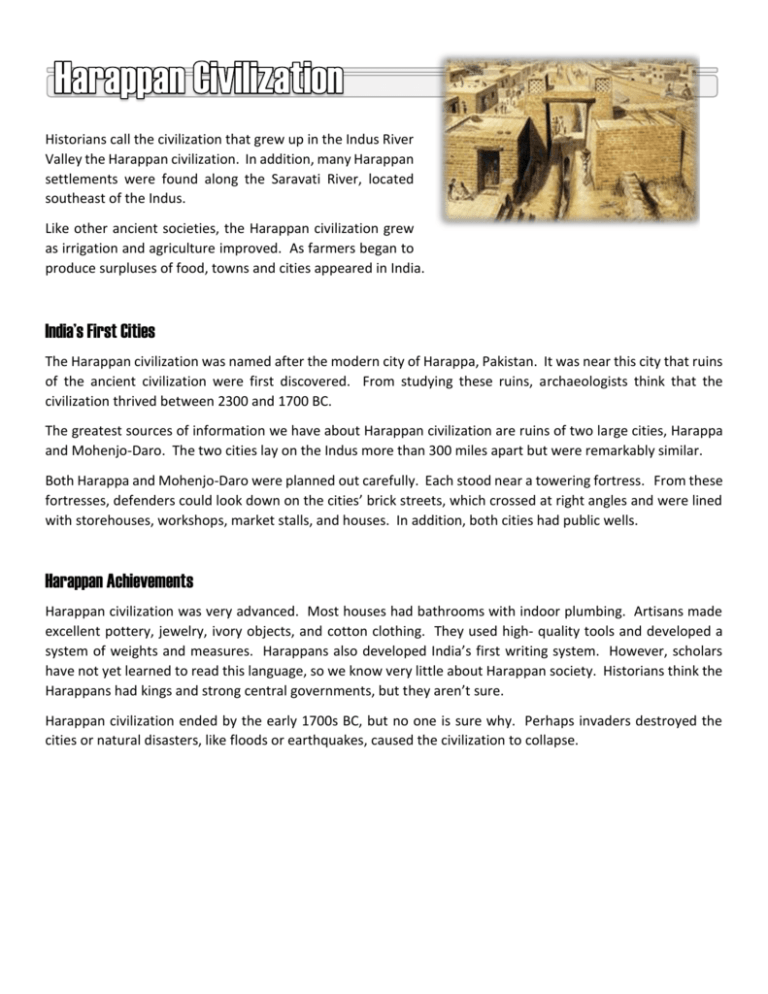
Historians call the civilization that grew up in the Indus River Valley the Harappan civilization. In addition, many Harappan settlements were found along the Saravati River, located southeast of the Indus. Like other ancient societies, the Harappan civilization grew as irrigation and agriculture improved. As farmers began to produce surpluses of food, towns and cities appeared in India. India’s First Cities The Harappan civilization was named after the modern city of Harappa, Pakistan. It was near this city that ruins of the ancient civilization were first discovered. From studying these ruins, archaeologists think that the civilization thrived between 2300 and 1700 BC. The greatest sources of information we have about Harappan civilization are ruins of two large cities, Harappa and Mohenjo-Daro. The two cities lay on the Indus more than 300 miles apart but were remarkably similar. Both Harappa and Mohenjo-Daro were planned out carefully. Each stood near a towering fortress. From these fortresses, defenders could look down on the cities’ brick streets, which crossed at right angles and were lined with storehouses, workshops, market stalls, and houses. In addition, both cities had public wells. Harappan Achievements Harappan civilization was very advanced. Most houses had bathrooms with indoor plumbing. Artisans made excellent pottery, jewelry, ivory objects, and cotton clothing. They used high- quality tools and developed a system of weights and measures. Harappans also developed India’s first writing system. However, scholars have not yet learned to read this language, so we know very little about Harappan society. Historians think the Harappans had kings and strong central governments, but they aren’t sure. Harappan civilization ended by the early 1700s BC, but no one is sure why. Perhaps invaders destroyed the cities or natural disasters, like floods or earthquakes, caused the civilization to collapse.


